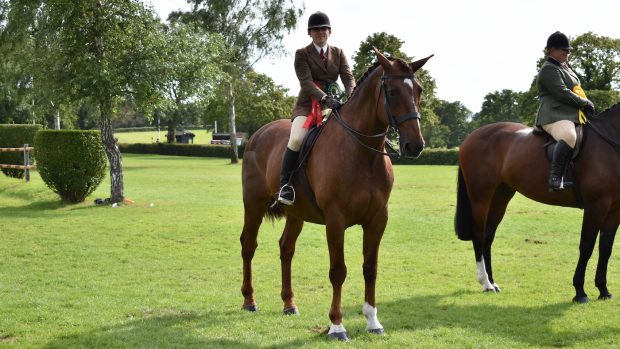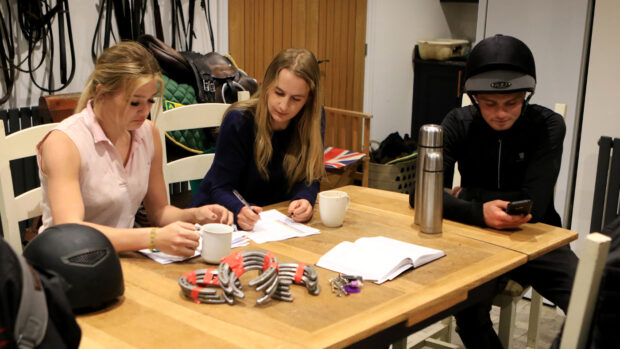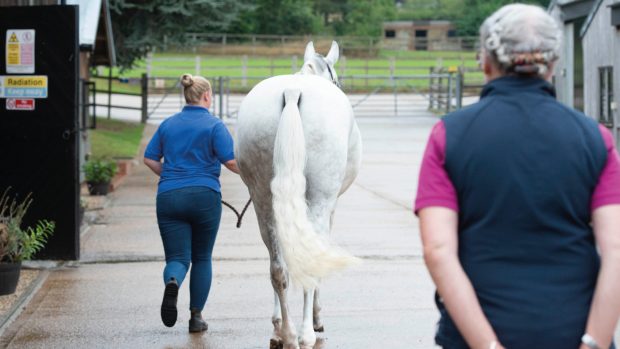Showing – and the industry as a whole – must work together to continue the progress made to combat equine obesity, from grassroots to the top levels.
At the equine weight forum, at the Royal International Horse Show (RIHS), where the Weigh to Win body condition awards were handed out for the fourth year, representatives of showing societies joined vets, riders and the outgoing and incoming chairs of the Showing Council to discuss the issue. It was agreed that it is “crucial” for everyone to work with and via the Showing Council to improve consistency and help support judges and stewards.
“Taking it forward as a collective is the way forward,” said Hickstead director of showing David Ingle. “It’s about a united voice; if we have 40 different voices, nothing will land, it will be a lot slower and we might not do it. If we do it together, we will do it.”
The Horse Trust introduced the awards in 2019 to celebrate horses and ponies of a healthy weight; they are assessed by vets and rosettes are handed out separately to the class placings. Among the major shows to feature the scheme are the RIHS, the Hickstead Derby meeting, Royal Windsor and the Great Yorkshire.
Imogen Burrows, chair of the British Equine Veterinary Association (BEVA) ethics and welfare committee, said she and past BEVA president Lucy Grieve are among those “passionate about championing this”.
“We’re working on how to communicate it to clients and owners,” she said. “And this isn’t just showing; it’s a global equine industry issue, and we’re aware of that. I was really excited to be asked to help with the awards, and it really gave me a perspective on the pressure when you’re standing in the ring– I take my hat off to all the judges.”
Rebecca Hamilton-Fletcher, an experienced equine vet, lifelong cross-discipline competitor and coach, who was involved in affiliated showing for years, said there is also a lot of work going on to combat equine obesity outside the show ring.
“We’re doing a lot of work with riding establishments,” she said. “The new regulations that came in five years ago have more emphasis on weight and welfare. We’re working with them to body condition-score animals, and encourage them to seek professional nutritional advice if there’s a consistent problem.”
Ms Hamilton-Fletcher spoke of watching a go-round of small ponies, and “all their bottoms were square”.
“But looking at the little 128cm showjumping ponies, there were no square bottoms,” she said.
“This is where we need to let judges and showing people see what they’re looking for, compared to what’s become normal in the showing world.”
The normalisation of excess equine weight was a key issue to be tackled, it was agreed; as people are so used to seeing it, it has become the norm.
“Reframing ‘normal’ is an important thing to do,” a spokesman for the awards said. “It is non-confrontational and would help people to retrain their eyes as to what is a healthy weight.”
Education was a key theme; there have been discussions about getting more information on obesity into the British Horse Society qualifications, the conference heard, to “get the information in right from the beginning”, so the message can be spread in every yard.
“On behalf of BEVA, we’ve been working on obesity for a number of years,” Ms Grieve said. “We’ve done lots of work with Tamzin Furtado [who is behind the awards with the Horse Trust’s Jan Rogers] trying to educate vets and make sure they’re on board, and trying to get farriers, physios and saddlers on board so everyone’s singing from the same hymn sheet.”
From a competitor’s point of view, showing producer Chris Hunnable said he and his wife Katie Jerram-Hunnable are “totally in support of all the hard work” involved in the awards and associated campaigning, and suggested it would be beneficial to have more feedback from assessors, on which to reflect. The possibility of feedback forms was discussed, with the view that exhibitors could read them or not as they choose.
Incoming Showing Council chair Liz Inman said that in her time as Burghley event director, feedback forms were introduced for the young event horse classes, which she said were challenging for judges but “in a positive way as it made them really think about their reasons for judging”.
The issue of show animals’ being fit for purpose was brought up; Katie referenced Shires.
“They’re the most unfit bunch of horses I’ve ever seen coming round the ring,” she said.
“I had an argument with an owner, who didn’t want the horse fit – but then it shouldn’t be in the ring. I wouldn’t ride it; I thought it was a disgrace it couldn’t walk, trot and canter round the ring.”
The need for veterinary research to continue, to improve knowledge on obesity, was discussed, as well as recent work looking at fat deposition in equine upper airways. Developing guidance and policy for showing societies is key, to be delivered in training for judges, stewards and exhibitors and by using “engaging positive language for vets, judges and stewards to use when tackling the challenging subject without causing people offence, which tends to have the opposite effect”.
The conference heard that welfare stewards are being present at shows to consider issues including body condition, and suitable rider weight, and it was agreed that “helping to support competitors through this in a positive way must be the way forward”.
“RIHS once again provided a warm welcome and an ideal base to bring together the equine weight forum,” Dr Furtado said. “Many changes and updates were discussed across the societies, including examples of new activities, training, and research projects which had all arisen from better collaboration between groups. It was really inspiring to once again see the showing organisations working together to be proactive about making change, and we have high hopes for the year ahead.”
You might also be interested in:

‘Judges must place fat horses lower’ to help beat equine obesity

Major show gives signs of hope in battle against equine obesity

Subscribe to Horse & Hound magazine today – and enjoy unlimited website access all year round
Horse & Hound magazine, out every Thursday, is packed with all the latest news and reports, as well as interviews, specials, nostalgia, vet and training advice. Find how you can enjoy the magazine delivered to your door every week, plus options to upgrade your subscription to access our online service that brings you breaking news and reports as well as other benefits.





